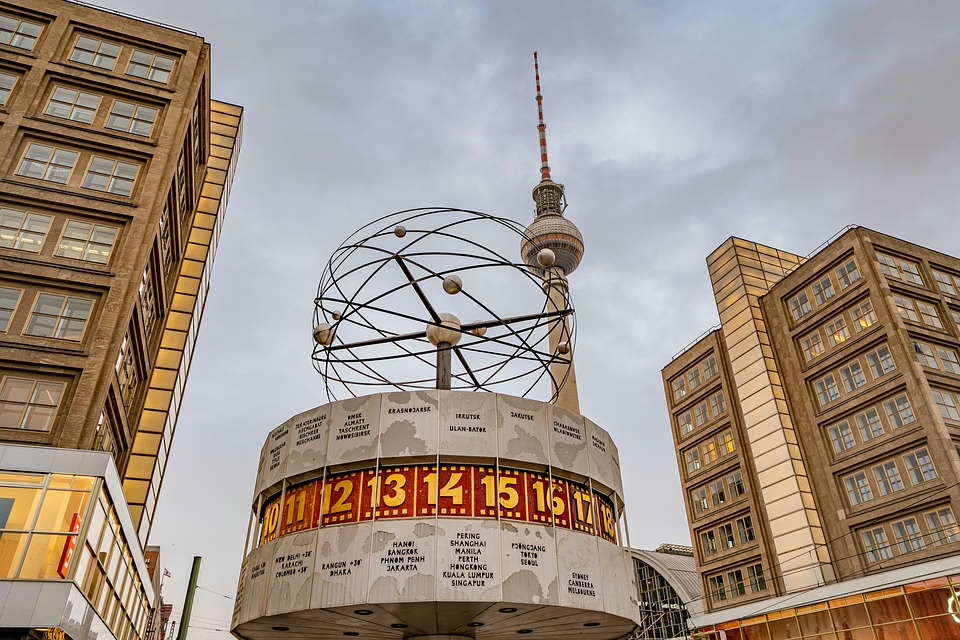World at War: An Analysis of Conflicts That Redefined Borders
The modern geopolitical landscape is largely shaped by historical conflicts, many of which have redefined national borders and altered the course of nations. This article explores significant conflicts that have not only changed the contours of maps but also impacted political, social, and cultural identities across the globe.
Historical Context: The Nature of Conflict
Throughout history, wars have been fought for various reasons: territorial ambitions, ideological divides, religious strife, and resource competition. Each conflict is unique, influenced by the context of its time, the stakeholders involved, and the underlying motivations. Analyzing prominent wars reveals the complexity behind territorial changes and how they reflect deeper societal values.
The World Wars: Global Reshuffle
World War I (1914-1918)
World War I was unprecedented in its scale and impact. The war saw the end of empires — notably the Austro-Hungarian, Ottoman, German, and Russian Empires. The Treaty of Versailles in 1919 set the stage for new geopolitical realities.
- Redrawing Borders: The Austro-Hungarian Empire was dissolved, leading to the creation of several nation-states, including Czechoslovakia, Yugoslavia, and Hungary. The borders drawn often reflected the political whims of victors rather than ethnic or cultural alignments, laying the groundwork for future conflicts.
World War II (1939-1945)
World War II recalibrated international boundaries with wider implications. The aftermath of the war was marked by decolonization as territories in Africa and Asia began clamoring for independence.
- Cold War Dynamics: The emergence of the United States and the Soviet Union as superpowers initiated a new type of conflict that was less about direct military confrontations and more about ideological battles, often manifesting in proxy wars across the globe.
Case Studies of Conflicts Redefining Borders
The Middle Eastern Turmoil: Post-World War II Conflicts
The Middle East has been a hotbed of conflicts, many of which can be traced back to decisions made during and after World War I and II.
-
Creation of Israel (1948): The establishment of the state of Israel following World War II led to conflict with neighboring Arab states and triggered the ongoing Israeli-Palestinian conflict. Borders were redrawn multiple times in subsequent wars, notably after the Six-Day War in 1967, which resulted in Israel capturing the West Bank, Gaza Strip, and Golan Heights.
-
The Iraqi-Syrian Border: The arbitrary borders drawn by colonial powers in the early 20th century neglected ethnic and sectarian lines, causing tensions that would erupt into violent conflicts, such as the Iraq War initiated in 2003. The resulting instability redefined not just Iraq but the entire region, with the rise of ISIS presenting an ideological and territorial challenge that transcended borders.
The Balkan Wars (1991-2001)
The disintegration of Yugoslavia in the 1990s highlighted how ethnic tensions, exacerbated by nationalist ideologies, can result in violent conflict and border shifts.
-
Ethnic Conflicts: The Bosnian War (1992-1995), characterized by ethnic cleansing and severe humanitarian crises, resulted in the Dayton Agreement, which established new borders and recognized the sovereignty of Bosnia and Herzegovina. The shift from a single nation-state to multiple independent countries indicated how clearly defined borders can become contentious.
-
Kosovo’s Declaration of Independence (2008): Following a brutal conflict in the late ‘90s, Kosovo declared independence from Serbia. This declaration highlighted the complexities of statehood and recognition in international law, with implications for secessionist movements worldwide.
The African Experience: Colonial Legacy and Beyond
The Scramble for Africa
The Berlin Conference of 1884-1885, during which European powers divided Africa among themselves without considering the indigenous peoples, created lasting ramifications.
- Post-Colonial Wars: Conflicts such as the Rwandan Genocide (1994) and the Sudanese Civil Wars (1955-1972, 1983-2005) were rooted in colonial-era divisions exacerbated by post-colonial governance failures. Borders drawn by colonizers often ignored ethnic realities, fueling tensions that culminated in violence.
The Biafran War (1967-1970)
Nigeria’s civil war, sparked by the secession of the southeastern region of Biafra, opened debates about self-determination and the rights of ethnic minorities.
- Impact on Borders: While Biafra’s secession was ultimately unsuccessful, the conflict highlighted the fragility of national unity in states with diverse ethnic backgrounds, prompting discussions about federalism and autonomy in border-dominated conflicts.
The Americas: A History of Territorial Disputes
The Spanish-American War (1898)
The Spanish-American War marked a shift in territorial control in the Americas.
- US Expansionism: Following the war, America gained control of Puerto Rico, Guam, and the Philippines, illustrating the shifting balance of power in both the Caribbean and Southeast Asia. These acquisitions also fostered questions about colonialism and the nature of modern imperialism.
The Mexican-American War (1846-1848)
This conflict resulted in significant territorial losses for Mexico, with the Treaty of Guadalupe Hidalgo leading to the United States acquiring present-day California, Arizona, New Mexico, Nevada, and Utah.
- Cultural Implications: The war not only redrew borders but also left lasting cultural imprints in the Southwest, affecting language, culture, and identity.
Re-examining National Borders: Contemporary Conflicts
In the 21st century, conflicts continue to challenge the notion of fixed borders, as national identities evolve alongside global interconnectedness.
The Syrian Civil War (2011-Present)
The ongoing Syrian Civil War has drastically altered the geopolitical landscape of the Middle East.
- Shifting Alliances: The rise of non-state actors like the Kurdish forces demonstrated how groups could transcend traditional state boundaries, further complicating sovereignty debates. The conflict highlighted how borders originally drawn by colonialism have become contested spaces influenced by ethnic and religious diversity.
The Role of Technology and Information Warfare
As conflicts evolve, the role of technology transforms military strategy and border disputes. Cyber warfare, misinformation campaigns, and social media’s impact on public opinion create new battlefields that transcend physical borders.
Case of Cyber Warfare: Russia and Ukraine
The annexation of Crimea by Russia in 2014 showcased how information warfare can redefine contemporary borders without traditional military engagements.
- Implications for National Security: The conflict raised critical questions about sovereignty and territorial integrity in an age where cyberspace facilitates conflict in ways that complicate traditional notions of borders.
Conclusion: Looking Forward
The analysis of historical conflicts illustrates that borders are often fluid, subject to the pressures of war, ideology, and identity. As we move forward, it becomes crucial to understand the implications of these shifts. In an increasingly globalized world, the challenges posed by contested borders may lead to new conflicts but also present opportunities for dialogue and resolution.
References
- [Modern_Footnote_Source]
- [Modern_Footnote_Source]
- [Modern_Footnote_Source]
This analysis employs a historical lens to understand current and future conflicts, emphasizing the importance of recognizing the underlying factors that drive nations into war. As geographical boundaries continue to be a source of conflict and negotiation, a deeper understanding of these dynamics will be essential for maintaining global stability.


























Add Comment